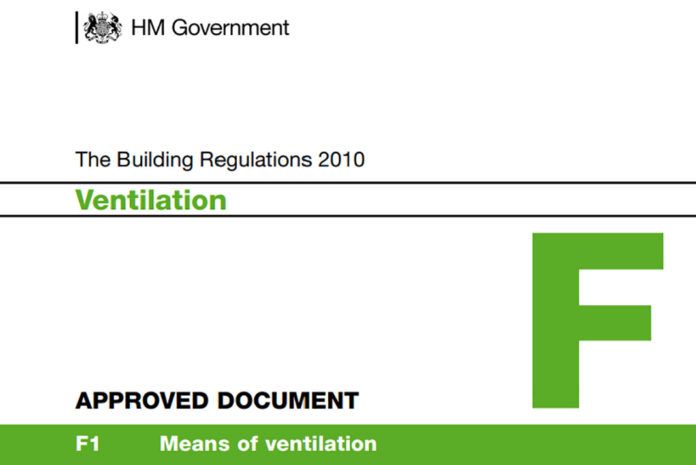
Part one of this series covered the basic requirements for domestic ventilation and the series now continues by looking at the options for controlling the ventilation fans and additional requirements.
Extract fans can be switched manually by a remote switch or integral pull-cord, automatically switched by a built-in or remote PIR detector, or connected to the local lighting switch – normal for WCs.
If installed in a non-habitable room, such as the kitchen, utility room, bathroom or WC without windows, then Building Regulations require the provision of a 15-minute overrun timer. The adjustable timer is usually integral with the fan and is triggered by operation of the lighting switch, so it requires both a permanent live and neutral supply plus a switched supply from the lighting switch.
Its supply needs to be run via a dedicated three-pole fan switch to provide complete electrical isolation.
The fan can also be controlled by a humidistat to give on/off or high/low speed operation and these can again be integral with the fan, together with the timer, if required.
Alternatively, the timer and humidistat may be in a separately mounted controller which also provides speed control of the fan.
HUMIDISTAT CONTROL
Simple humidistats operate at a set humidity level, but this can cause a problem. Air has the capacity to hold moisture up to a limiting level at which it is said to be saturated. The higher the air temperature the more moisture it can hold and viceversa.
The moisture level of air is defined by its relative humidity – the ratio of the actual amount of water within the air to the maximum it can hold at that temperature, known as its saturation level. If the air in a room is at 20°C and a relative humidity of 55% and the extract fan humidistat is set at 65%, the fan will not operate.
If the room temperature drops overnight to 16°C, the maximum amount of water it can hold will be reduced. Although the actual amount of water within the air in the room may not have changed, since the maximum it can hold has reduced, the relative humidity will have increased, from 55% to 70%.
This will result in the fan switching on, which could be annoying in the middle of the night. To overcome this problem, most fans are fitted with a dynamic humidistat that will automatically raise the humidity setpoint as the air temperature drops, so avoiding this problem.
With reduced levels of natural infiltration into houses, extract fans are vital to ensure adequate levels of ventilation and the use of humidity-controlled extract fans will prevent undesirable increases in internal moisture levels, not just in kitchens and bathrooms.
Alternatively, the use of heat recovery extract fans can be more cost-effective as they recover heat from the extract airstream and the continuous introduction of fresh air will reduce pollutant and moisture build-up.
CONTINUOUS EXTRACT RATES
As mentioned in part one, current Building Regulations require levels of construction to give a high level of air tightness, or air permeability, which will have to be proven by tests on completed buildings.
In recognition of this, and the previously mentioned problems resulting from low ventilation levels, the government has updated the requirements in Part F of the Building Regulations.
Whilst specifying minimum intermittent extract rates for kitchens, utility rooms, bathrooms and separate WCs, which was covered in part one, there are alternative methods of compliance given in the regulations based on continuous extract.
The option of continuous extract stipulates minimum high rates for kitchens, utility rooms and bathrooms of 13 l/s, 8 l/s and 8 l/s respectively and minimum low rates for the entire house of between 13 l/s and 29 l/s, depending on the number of bedrooms, and not less than 0.3 l/s per sq m internal floor area.
Part F also introduces the option of whole house ventilation, as well as giving more detailed recommendation on locations of fans and methods of control.
The provision of effective ventilation is no longer simply a matter of putting in a couple of arbitrarily selected fans. The requirements for each dwelling must be calculated, as directed in the Building Regulations and the appropriate fans and methods of control selected.
Fortunately, the Approved Document Part F gives all the information that is required and is clearly written and easily understood – after reading a couple of times, that is.
A copy of Part F can be downloaded from the government website.
